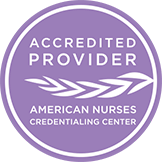They are identifying AHT in children through an objective, thorough history, physical examination, laboratory tests, imaging studies, and a retinal exam. Commonly, the pediatric patient will present for medical care related to symptoms of their injury without a history of preceding trauma. In cases of child abuse, the history provided by the caregiver is often inconsistent, incomplete, or incorrect. Some children may present with mild or nonspecific symptoms such as vomiting or fussiness and may be misdiagnosed, only to return with severe or fatal injuries (Christian, 2024). Therefore, awareness and understanding of the clinical presentation and associated findings in pediatric AHT can aid in early identification and treatment.
A physical exam of the patient may raise suspicion for abuse when noting multiple injuries at different healing stages or injuries that do not correlate with the child's developmental level. For example, bruising is uncommon in an infant that is not ambulating. Other varied symptoms may include mild flu-like symptoms, altered consciousness, and coma. A complete nursing assessment focusing on neurological exams can provide pertinent clues that lead to necessary testing to confirm the diagnosis. As reviewed, symptoms may be nonspecific and may include:
- Poor feeding
- Lethargy
- Apnea
- Bulging fontanels
- Failure to thrive
- Vomiting
- Respiratory difficulty
- Decreased level of consciousness
- Seizure activity
- Stiffness
- Irritability
- Ligature marks
- Bruising
- Decreased interaction
- Bradycardia
Additional diagnostic studies for these patients include blood work such as a complete blood count (CBC), comprehensive metabolic panel (CMP), platelets, and coagulation studies. Urinalysis and toxicology screening may also be considered in evaluating child abuse.Necessary imaging studies include a computed tomography (CT or CAT) scan for diagnosis of intracranial injury and a skeletal survey for additional bone examination. Possible follow-up imaging, such as magnetic resonance imaging (MRI), for further diagnosis and clarification of findings. Finally, an ophthalmologic exam to assess for retinal hemorrhage is expected. Eye findings are noted in 85% of AHT cases (Song and Jain, 2022).
With injuries that are inconsistent with the history, further history-taking should be performed. When there are multiple injuries at various healing stages, a full head-to-toe physical examination is necessary. A suspicious fracture in any child under the age of two necessitates X-rays of long bones, the spine, etc. Intracranial injuries necessitate a head CT. For confirmation of injuries and to determine the extent of the child's injuries, an MRI is necessary (Hung, 2020).
Although no single physical finding definitively identifies pediatric AHT, there are hallmarks of child abuse and AHT. Combinations of clinical conditions or injuries can help accurately identify patients with a high likelihood of pediatric AHT. These conditions include, but are not limited to:
- Irreversible brain damage
- Retinal hemorrhage
- Cerebral palsy
- Spinal cord injury
- Seizures
- Blindness
- Eye damage
- Paralysis
- Learning disability
- Hearing loss
- Central nervous system injury
- Subdural hematoma
- Rib fracture
- Closed head injury
Depending on the facility, AHT can be graded. Grade I indicates a skull fracture without any soft tissue injuries. Grade IIa indicates intracranial hemorrhage and/or cerebral edema that does not require surgery. Grade IIb represents intracranial hemorrhage and/or cerebral edema that does not require surgery, but a brain infarction is present. Grade IIIa indicates intracranial hemorrhage and/or cerebral edema requiring surgery or when the patient dies. Grade IIIb indicates intracranial hemorrhage and/or cerebral edema requiring surgery or when the patient dies, and when a brain infarction is present (Hung, 2020).
Injuries can also be classified as mild, moderate, or severe. Some of the variables that help to predict or classify this injury include acute respiratory compromise prior to coming to the hospital, bilateral subdural hematomas, bruising of the neck, ears, or torso of the body, and complicated skull fractures (Joyce et al., 2023).







